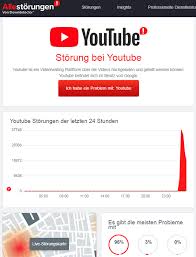Introduction
On October 31, 2023, YouTube experienced a widespread outage that left millions of users across the globe unable to access the platform. Given YouTube’s status as one of the most popular video-sharing services, this incident highlights the significant reliance on digital platforms for entertainment, news, and social interaction. Such outages can disrupt daily activities, affecting content creators and audiences alike.
Details of the Outage
Reports began flooding in around 10 AM SAST, with users from various continents, including North America, Europe, and parts of Asia, confirming troubles accessing YouTube. The issues varied, with some users facing buffering screens, while others encountered error messages indicating that the site was unavailable.
Within a few hours, YouTube’s official Twitter account acknowledged the outage, stating, “We are aware that some users are experiencing issues while trying to access YouTube. Our team is actively investigating and working to resolve the issues as quickly as possible.” This message provided some reassurance to users who were uncertain about the cause and duration of the problem.
Response and Recovery
By midday, YouTube had implemented fixes, resulting in many users regaining access to the site. However, some intermittent issues persisted for several more hours. The precise cause of the outage has not been definitively determined; however, initial speculation points to server issues or a malfunction in a recent software update.
This incident is not unique to YouTube. Other major platforms, including Discord, Facebook, and Twitter, have also faced outages in the past, reminding users of the vulnerabilities in our increasingly digital lives. Despite the quick response from YouTube teams, the incident raised discussions about the reliability of cloud-based services and the potential consequences of such downtimes in our interconnected world.
Conclusion
The brief outage of YouTube serves as a notable reminder of the dependencies that modern society has on digital platforms for various aspects of life. As more people turn to these services for their daily entertainment and information, the expectations for uptime and reliability continue to rise. The demands placed on companies like YouTube require robust strategies to minimize disruptions and ensure a quick recovery process. Users can expect continued improvements as YouTube works to enhance their infrastructure to prevent similar incidents in the future.


